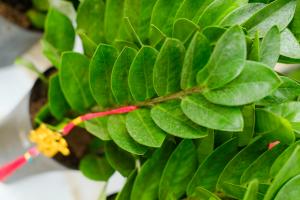Can You Leave the Live Plants in the Pots?
Planting in pots is a convenient way to add greenery to your indoor or outdoor space. However, many people wonder whether live plants can be left in their pots or if they need to be transplanted into the ground. The answer to this question depends on several factors, which we'll explore in this article.
The Benefits of Leaving Live Plants in Pots
There are several advantages to leaving live plants in their pots. First, it allows you to move the plants around to different locations as needed. For example, you may want to place a plant in a sunny area during the day and move it to a shady spot at night. You can also move plants indoors during the colder months to protect them from frost.
Leaving plants in pots also makes it easier to control their environment. You can choose the type of soil best suited for each plant, adjust the watering schedule, and fertilize as needed. Potted plants are also less susceptible to pests and diseases since they are isolated from the surrounding soil.
The Drawbacks of Leaving Live Plants in Pots
While there are many benefits to leaving live plants in pots, there are also some drawbacks to consider. One of the biggest concerns is that plants can outgrow their pots, especially if they are not repotted periodically. As plants grow, they may become root-bound, meaning their roots have reached the bottom of the pot and are overcrowding the soil. This can cause the plant to wilt, become stunted, or die.
Another potential problem is that plants left in pots may be less stable than those planted in the ground. Potted plants can be knocked over or blown over by strong winds, which can damage the plant or spill soil all over your patio or balcony. This can be especially problematic if the pot is heavy or large.
When to Repot Plants
To avoid the problems associated with root-bound plants, it's important to know when to repot your plants. Signs that your plant may need a larger pot include roots growing out of the drainage holes, slowed growth, yellowing or wilting leaves, or soil drying out very quickly after watering.
When repotting, choose a pot that is only slightly larger than the current one, to avoid overpotting. Gently remove the plant from its current pot and loosen any tangled roots. Add fresh soil to the new pot and place the plant in the center, making sure it sits at the same depth as before. Water the plant thoroughly and allow the excess water to drain away.
In Conclusion
So, can you leave live plants in pots? The answer is yes, but be aware of the potential problems associated with this method. Keep an eye on your plants to ensure they are not becoming root-bound or unstable, and repot as needed. With proper care, potted plants can provide years of beauty and enjoyment in your home or garden.

 how many times do yo...
how many times do yo... how many planted tre...
how many planted tre... how many pine trees ...
how many pine trees ... how many pecan trees...
how many pecan trees... how many plants comp...
how many plants comp... how many plants can ...
how many plants can ... how many plants and ...
how many plants and ... how many pepper plan...
how many pepper plan...






























